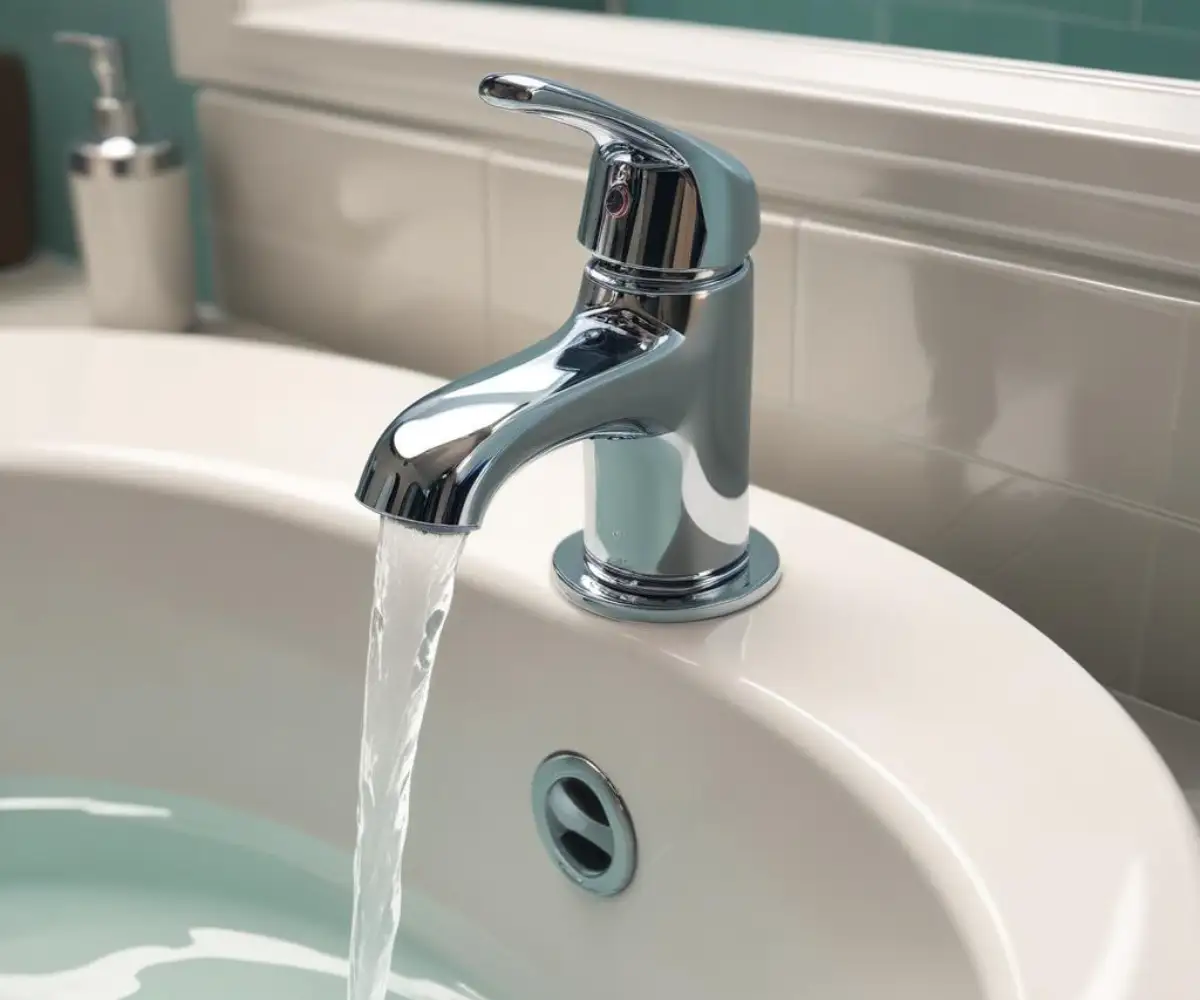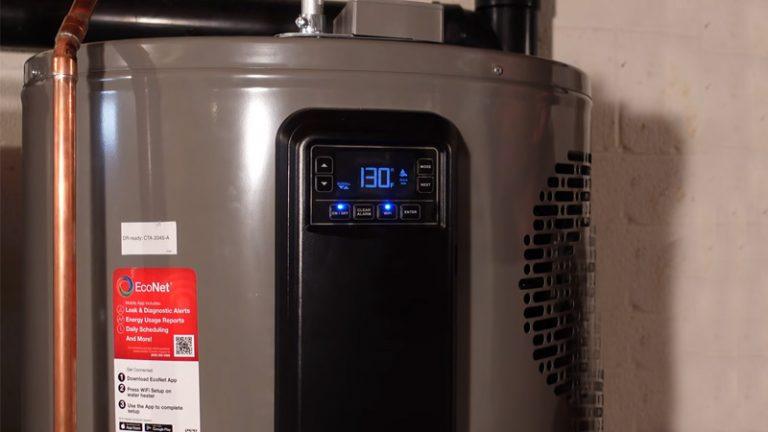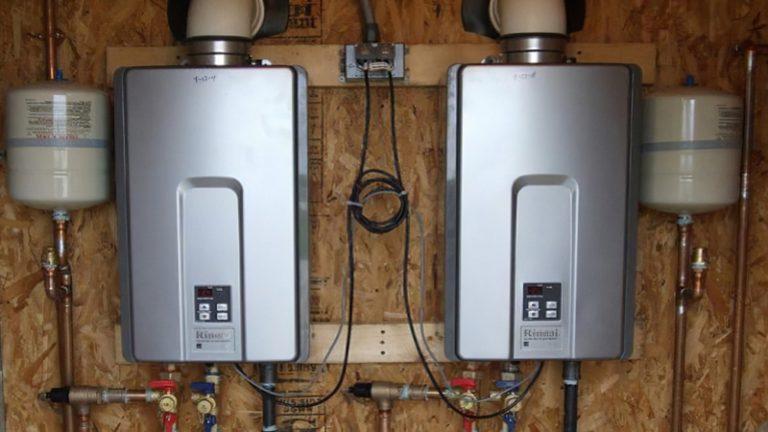Hot Water Smells Like Dirt? Unearth the #1 Cause & Fix Now!
You turn on the shower, ready for a relaxing, hot spray, but instead of clean, fresh water, you get a blast of an unpleasant, earthy odor. That distinct smell of dirt, soil, or mustiness coming from your hot water is not just unsettling; it’s a clear sign that something is wrong inside your plumbing system.
This is a surprisingly common household problem that sends homeowners searching for answers. The good news is that the cause is usually straightforward, and the solution is something you can often handle yourself without an expensive plumbing bill.
This comprehensive guide will walk you through everything you need to know. We’ll diagnose the root cause of the dirty smell, provide a detailed, step-by-step plan to fix it, and give you the preventative tips you need to ensure the problem never comes back.
You'll Learn About
Decoding the Odor: Why Your Hot Water Smells Like Earth
When your hot water carries an earthy or musty smell, the primary suspect is almost always your water heater. Over time, the tank at the heart of your hot water system can accumulate various materials from your water supply, creating the perfect environment for odors to develop.
The number one cause is sediment buildup in the bottom of your water heater tank. This sediment is a collection of minerals (like calcium and magnesium, which cause hard water), sand, tiny particles of rust, and other debris that naturally occurs in both city and well water supplies.
As this layer of sludge builds up, it can harbor harmless, naturally occurring bacteria. When the water heater’s burner or heating element kicks on, it warms this sludgy, bacteria-filled layer, which then releases smelly gases that dissolve into your water, creating that distinct dirt-like odor that you only notice when using the hot tap.
Other Potential Causes for Earthy Water Smells
While sediment is the most frequent offender, a few other issues can contribute to foul-smelling water. It’s important to consider these possibilities to ensure you’re applying the right fix.
One potential issue is the state of your anode rod. Inside your water heater tank is a component called a “sacrificial” anode rod, typically made of aluminum or magnesium. Its job is to corrode and break down over time, a process that prevents the steel tank itself from rusting. If this rod becomes completely corroded or interacts with certain types of bacteria, it can sometimes contribute to unusual odors.
For homes on a private well, the water source itself can be the issue. Well water can contain higher levels of iron bacteria and other minerals that produce an earthy smell. If both your hot and cold water have the odor, the problem lies with your well or filtration system, not just the water heater.
Is the Dirt Smell in My Hot Water Dangerous?
This is the first question on everyone’s mind, and thankfully, the answer is usually no. In most cases, the earthy smell caused by sediment is not a direct health hazard. The odor is typically caused by harmless minerals and bacteria reacting to the heat.
However, you should not ignore the smell. It is a clear indicator that your water heater is overdue for critical maintenance. Left unchecked, this sediment buildup can lead to much bigger and more expensive problems down the road.
Excessive sediment can reduce your water heater’s efficiency, forcing it to work harder and use more energy to heat the water, driving up your utility bills. It can also lead to premature tank failure and corrosion, which can result in a catastrophic leak. Ignoring the smell is like ignoring the check engine light in your car; the initial problem might be small, but it can lead to a major breakdown.
Your Ultimate Action Plan: How to Eliminate the Dirt Smell for Good
Now we get to the solution. Getting rid of that unpleasant earthy odor involves a straightforward maintenance task that every homeowner should know how to do: flushing the water heater. This process drains the tank and clears out all the accumulated sediment that’s causing the smell.
Follow these detailed steps carefully to safely and effectively clean your system.
Step 1: Pinpoint the Source of the Odor
Before you start draining your tank, you must confirm that the smell is isolated to your hot water. This quick diagnostic test will save you a lot of effort if the problem lies elsewhere.
Go to a sink and turn on only the hot water tap. Let it run for a minute and smell the water. Then, turn off the hot water and turn on only the cold water. If the dirt smell is only present with the hot water, you have confirmed the issue is with your water heater. If both hot and cold smell, the problem is in your main water supply.
Step 2: Gather Your Tools and Prepare for Safety
You’ll only need a few basic items for this job. Having them ready will make the process smooth and efficient.
- A standard garden hose: It needs to be long enough to reach from the bottom of your water heater to a floor drain, utility sink, or outside area.
- A bucket: Useful for catching initial drips from the valve.
- Pliers or a wrench: You may need these to help open the drain valve if it’s stiff.
Safety is the most important step. You must turn off the power source to your water heater before draining it. Heating an empty or partially empty tank can cause serious damage to the unit.
- For an electric water heater: Go to your home’s breaker box and shut off the circuit breaker dedicated to the water heater.
- For a gas water heater: Find the thermostat dial on the gas control valve and turn it to the “PILOT” or “OFF” position. This will stop the main burner from igniting.
Step 3: The Complete Guide to Flushing Your Water Heater
With your tools gathered and the power off, you are ready to flush the tank. This process will likely take about an hour to complete.
First, turn off the water supply to the heater. Look for the cold water pipe entering the top of the unit; there will be a shut-off valve on it. Turn the valve clockwise until it stops. This prevents new water from entering the tank while you drain it.
Next, connect your garden hose to the drain valve located near the bottom of the water heater tank. Place the other end of the hose in a safe drainage area. Be aware that the water coming out will be hot and may contain a lot of debris.
To prevent a vacuum from forming in the lines, go to a sink or tub inside your house and open the hot water tap. You’ll hear some gurgling as air enters the system, which is perfectly normal and necessary for the tank to drain properly.

Now, it’s time to open the drain valve on the water heater. Some are simple hand-turn valves, while others may require a flathead screwdriver or pliers. Open it slowly and allow the water to start flowing through the hose. The tank will now begin to drain completely.
As the tank drains, you will likely see discolored, murky water flowing out of the hose. This is the sediment you’re trying to remove. Once the tank is empty, you can further agitate the remaining sediment by briefly opening the cold water supply valve for a few seconds. This blast of fresh water will stir up the sludge at the bottom so it can flow out the drain hose.
After the water running out of the hose is clear, you can close the drain valve securely. Disconnect the hose, close the hot water tap you opened inside, and you’re ready to refill the tank.
Step 4: Refilling the Tank and Restoring Power
To refill the tank, simply turn the cold water supply valve back on. You will hear water flowing back into the empty tank. Keep a hot water faucet open in your house during this process; it will hiss and sputter as air is pushed out of the pipes.
Once the water flowing from that faucet is steady and free of air bubbles, the tank is full. At this point, you can safely turn the power back on at the circuit breaker or relight the pilot and turn the gas control valve back to the “ON” position.
It will take some time for the fresh tank of water to heat up. Once it does, the dirty water smell should be completely gone.
Troubleshooting Common Water Odor Issues
Flushing the tank solves the problem for most people, but what if the smell lingers or is slightly different? The table below breaks down the most common causes of water odors and how to address them.
| Problematic Odor | Primary Cause | Recommended Solution |
|---|---|---|
| Earthy / Dirt / Musty Smell | Sediment buildup and bacteria in the hot water heater tank. | Flush the water heater tank annually to remove all sediment. |
| Rotten Egg / Sulfur Smell | A chemical reaction between sulfate-reducing bacteria and a corroding magnesium or aluminum anode rod. | Replace the existing anode rod with a zinc-aluminum alloy anode rod, which is designed to prevent this reaction. |
| Metallic Smell | High concentrations of iron, zinc, or manganese, often from aging pipes or the water source itself. | Consider installing a whole-house water filter designed to remove excess minerals. If pipes are old, consult a plumber. |
| Bleach / Chemical Smell | Typically caused by chlorine used by municipal water treatment facilities to disinfect the water supply. | Let water sit in an open container for a few hours to allow chlorine to dissipate, or install a carbon-based water filter. |
A Proactive Approach: How to Prevent the Dirt Smell from Returning
You’ve successfully eliminated the odor, but your job isn’t done. The key to long-term success is preventative maintenance. By taking a few simple steps, you can ensure your water remains fresh and your water heater runs efficiently for its entire lifespan.
The most important preventative measure is to flush your water heater annually. This regular cleaning prevents sediment from ever building up to a level where it can cause odors or damage the tank. Mark it on your calendar as a yearly home maintenance task.
If you live in an area with particularly hard water or use a well, consider installing a whole-house sediment filter. This device is installed where the main water line enters your home and captures sediment before it ever reaches your pipes or water heater, protecting all of your plumbing fixtures.
Regular maintenance not only keeps odors at bay but also prevents catastrophic failures. A neglected water heater can corrode and leak, causing extensive water damage. Should you ever discover a major leak, such as water coming up from floorboards, it signals an emergency that requires immediate professional help.
When Should You Call a Professional Plumber?
While flushing a water heater is a manageable DIY project for many, there are times when it’s best to call in a professional. If you are not comfortable working with your home’s plumbing or electrical systems, a licensed plumber can perform the service safely.
You should also call a professional if you’ve flushed the tank and the smell persists, or if your water heater is very old and the drain valve is corroded or stuck. A professional can also inspect the anode rod and other components to ensure the overall health of your unit.
That dirty water smell is often most noticeable in the shower, a space where cleanliness is paramount. Maintaining the integrity of your entire bathroom, from the water you use to the structure itself, creates a healthier home. This includes proper construction and waterproofing, where a professional’s advice on topics like the choice between hot mop vs. other liners can make all the difference in preventing future moisture and mold problems.
Final Thoughts: Enjoy Fresh, Clean Hot Water Again
A hot water supply that smells like dirt is a jarring problem, but it’s one with a clear cause and an effective solution. That earthy odor is your water heater’s way of telling you it’s time for a cleaning. By regularly flushing the sediment from the tank, you can eliminate the smell and significantly extend the life and efficiency of your unit.
Don’t let unpleasant odors disrupt your daily routine. Take control of your home’s maintenance, follow this guide, and you’ll be able to enjoy the simple pleasure of clean, odor-free hot water whenever you need it.


